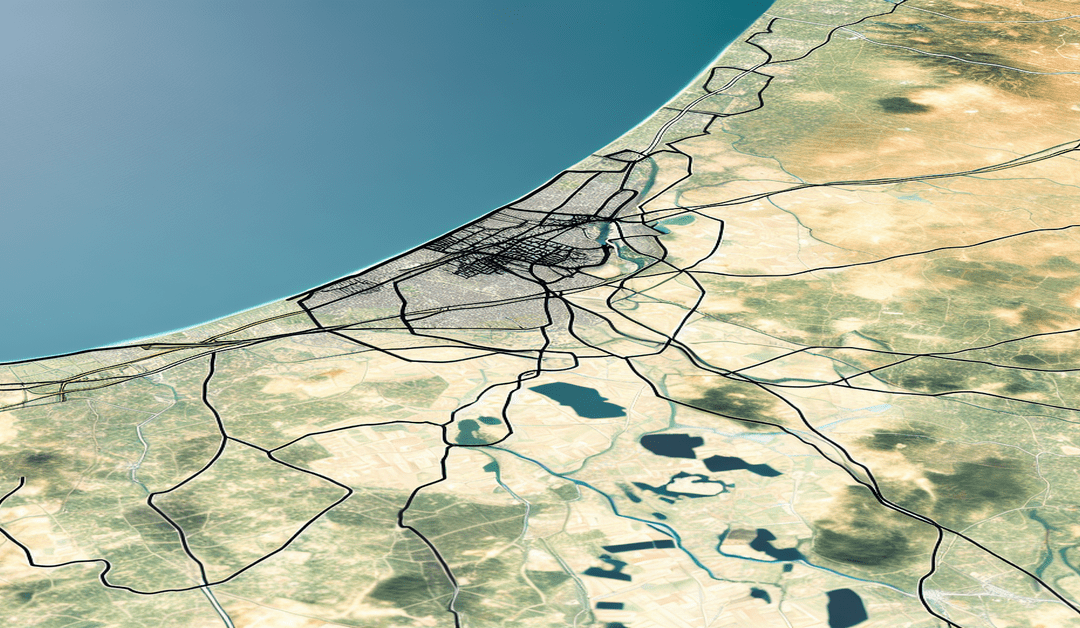The Truth About Palestine’s Presence on Google Maps
In recent days, a viral claim has been circulating online, suggesting that Google has removed Palestine from its maps. This assertion has sparked widespread concern and confusion among users, prompting many to question the tech giant’s motives and the implications of such an action. However, upon closer examination, it becomes clear that this claim is a misconception that stems from a lack of understanding about how Google Maps labels disputed territories.
Debunking the Claim: Palestine’s Absence on Google Maps
Contrary to popular belief, Google Maps has never labeled the region as “Palestine” in the first place. Instead, the platform uses terms like “**West Bank**” and “**Gaza Strip**” to refer to the territories in question. This naming convention has been consistent throughout the years, and there has been no recent change or removal of Palestine from the maps.
It’s important to note that this is not the first time such a claim has surfaced. In 2016, a similar controversy arose when a Change.org petition alleged that Google had removed all mentions of Palestine at the insistence of the Israeli government. However, Google swiftly clarified that it had never used the label “Palestine” on its maps, putting an end to the speculation.
Navigating Disputed Territories on Google Maps
When you search for “Palestine” on Google Maps, the platform directs you to the region encompassing the West Bank and Gaza Strip. These areas are marked with **dotted lines**, indicating their status as disputed territories. This visual representation aims to provide users with a clear understanding of the complex geopolitical situation in the region.
Google Maps’ approach to labeling disputed territories is not unique to Palestine. The platform employs similar tactics in other regions where borders and sovereignty are contested, such as Kashmir and Crimea. By using neutral terminology and visual cues, Google strives to maintain a balanced and objective representation of these sensitive areas.
The Complexity of International Recognition
The controversy surrounding Palestine’s presence on Google Maps is rooted in the larger issue of international recognition. While Palestine is recognized as a state by the United Nations and over 135 countries, it is not recognized by Israel or the United States. This lack of universal recognition contributes to the complexity of labeling the region on maps.
Google, as a global technology company, must navigate these political sensitivities while providing accurate and reliable information to its users. The decision to use terms like “West Bank” and “Gaza Strip” instead of “Palestine” reflects the company’s attempt to remain neutral in a highly contentious geopolitical landscape.
The Importance of Fact-Checking in the Digital Age
The viral claim about Palestine’s removal from Google Maps highlights the importance of fact-checking in the digital age. With the rapid spread of information through social media and other online platforms, it’s crucial to verify the accuracy of claims before accepting them as truth.
In this case, a simple investigation reveals that the claim is false. Google Maps has never used the label “Palestine,” and the territories in question are still represented on the platform, albeit under different names. By taking a moment to fact-check and seek out reliable sources, we can combat the spread of misinformation and promote a more informed online community.
Moving Forward: Fostering Understanding and Dialogue
The debate surrounding Palestine’s presence on Google Maps serves as a reminder of the complex geopolitical realities that shape our world. While the claim of Palestine’s removal from the maps is unfounded, it underscores the need for ongoing dialogue and understanding about the region’s history, struggles, and aspirations.
As individuals, we have a responsibility to approach these issues with empathy, nuance, and a commitment to seeking out accurate information. By engaging in constructive conversations, we can foster a more informed and compassionate society, one that recognizes the humanity in all people, regardless of their political or geographical boundaries.
In conclusion, the viral claim that Google removed Palestine from its maps is a misconception that has been debunked by closer examination. Google Maps has consistently used terms like “West Bank” and “Gaza Strip” to refer to the disputed territories, reflecting the complex geopolitical situation in the region. As we navigate the digital age, it’s crucial to fact-check claims and seek out reliable sources to combat the spread of misinformation. By fostering understanding and dialogue, we can work towards a more informed and compassionate global community.
#PalestineOnGoogleMaps #FactCheck #DisputedTerritories #DigitalLiteracy #GeopoliticalAwareness
-> Original article and inspiration provided by Newschecker
-> Connect with one of our AI Strategists today at ReviewAgent.ai

